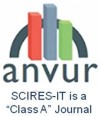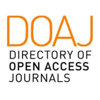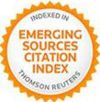Abstract
Innovative tools which are constantly being developed make it possible for the researcher to adopt an integrative approach favorable to everyone involved in the whole process of documentation. Close collaboration of architects and archaeologists made it possible to understand the key elements of archaeological heritage based on considerations extracted from historical analysis and to have at disposal a large quantity of information gathered by taking advantage of the potentialities of technologically advances tools. The significance of constructing digital models in the domain of archaeology is already a well-established idea and only reinforces the theoretical bases of survey and representation. The objective is to present the way in which digital technologies allow us to document, preserve, evaluate and popularize cultural heritage by structuring out an “open” system of cognition and therefore always lending itself to implementation.
Keywords
Full Text:
PDFDOI: http://dx.doi.org/10.2423/i22394303v5n2p71
References
Article Metrics
Metrics powered by PLOS ALM
Refbacks
- There are currently no refbacks.
Copyright (c) 2016 Alfonso Ippolito

This work is licensed under a Creative Commons Attribution-NonCommercial-NoDerivatives 4.0 International License.
SCIRES-IT, e-ISSN 2239-4303
Journal founded by Virginia Valzano





